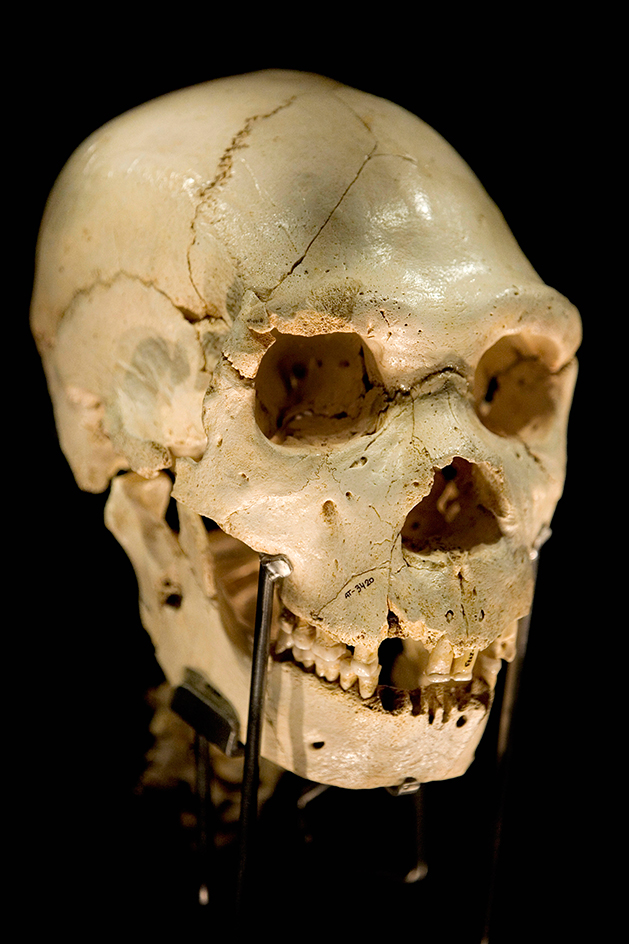Atapuerca << ah tah PWEHR kah >> fossil site is a location in northern Spain where scientists have found some of the earliest evidence of human beings living in what is now Europe. Anthropologists think that human beings originated in Africa and later migrated to Asia, Europe, and elsewhere. The site consists of a complex system of limestone caves in the Atapuerca Mountains near Burgos. There, anthropologists have identified a wealth of fossilized remains of prehistoric human ancestors . In 2000, the United Nations Educational, Scientific and Cultural Organization ( UNESCO ) declared the location a World Heritage Site . UNESCO considers such sites to be areas of unique natural or cultural importance.

At one cave, known as Gran Dolina, scientists uncovered fragmented fossil bones of several individuals, including the partial skull of a child. The scientists determined that these bones belong to early human beings who lived about 800,000 years ago. The bones rank among the oldest human fossils found in Europe and possess many primitive features. Anthropologists working at the site have suggested classifying the fossils as a new species, Homo antecessor. But not all anthropologists agree with this scientific classification.
In 2007, anthropologists excavating another cave in the Atapuerca range called Sima del Elefante (Elephant Cave) discovered a fossil jawbone. Scientists determined that this jawbone belonged to an early human being who lived about 1.1 million to 1.2 million years ago. The fossil represents the oldest human remains from western Europe.
Anthropologists working at a nearby cave excavated the fossilized remains of more than 30 individuals, including several skulls and examples of most other parts of the skeleton. This cave is known as Sima de los Huesos (Pit of the Bones) because the fossils were found in a shaft about 43 feet (13 meters) deep in the back of the cave. Scientists also found the fossilized bones of various animals mixed with the human bones. Scientists do not know how the bones accumulated in the cave. Some scholars think that the inhabitants deliberately threw the dead into the shaft. They believe that some animals, such as bears, may have occasionally wintered in the cave and accidentally fallen down the shaft.
Scientists have determined that the Sima de los Huesos fossils are about 400,000 years old. These fossil bones possess many physical features distinct from the bones at Gran Dolina but similar to those of Neandertals . Neandertals were prehistoric human beings who lived in Europe and central Asia. They are known mainly from fossils that date back as far as about 150,000 years ago. In 2016, scientists recovered and analyzed genetic (hereditary) material from some of the Sima de los Huesos fossils. The analysis suggested that the Sima de los Huesos people were actually an early population of Neandertals.
